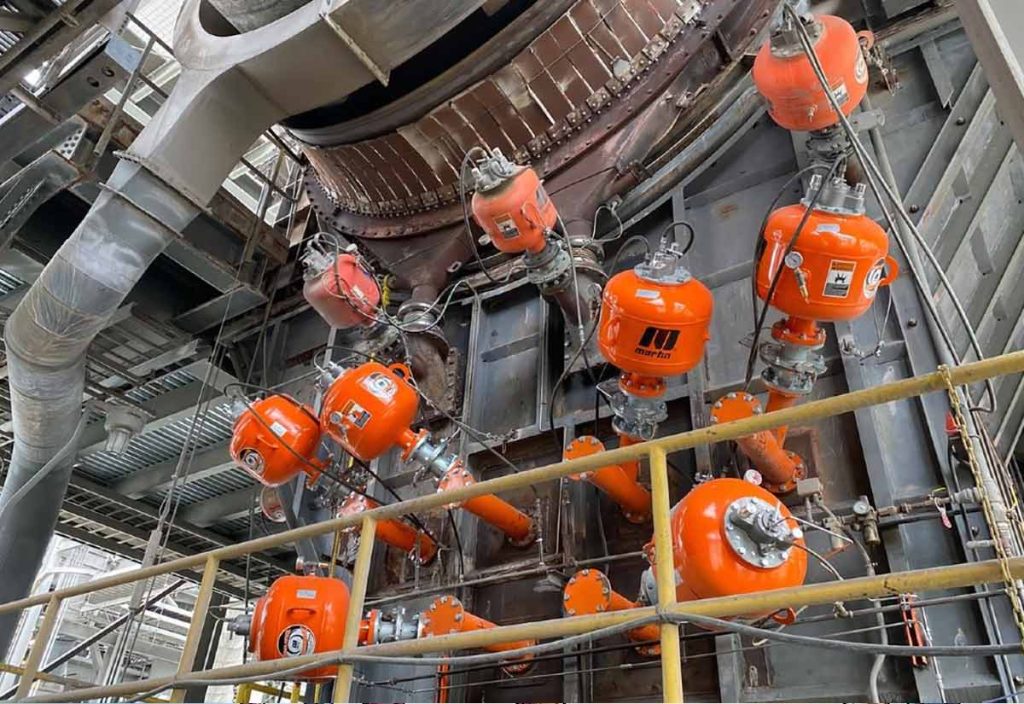“Labor Hoarding” is Job Security for Canadians in the year ahead, according to a report at The Star. Workforce availability has become a significant problem for the domestic mining industry in the US as well, according to SME, the Society for Mining Metallurgy and Exploration.
The labor shortage in heavy industry is an issue that has dominated HR circles for at least a decade, and now ominous labor forecasts are coming to fruition in 2024.
The concept of “labor hoarding” in Canada is becoming increasingly relevant as our neighbors to the north face a risk of recession in early 2024. In the human resources sector, this can be quite a balancing act, a strategy where companies attempt to maintain their workforce while reducing both hiring and layoffs in an attempt to cope with economic downturns.
Despite the Canadian economy’s slow-down, the job market remains resilient, with unemployment rates expected to stay low. This trend, highlighted by economists, indicates a cautious approach by businesses amidst economic uncertainties and is likely to characterize the entire North American private sector in 2024.
Can 2023 Economic Resilience in Canada Endure Through 2024?
As of mid-2023, the Canadian economy has shown impressive resilience in the face of high inflation and interest rate hikes. GDP figures reflected faster-than-expected growth and strong household spending.
These positive trends for the Canadian labor market had some economists reassessing their predictions of a recession in 2024. But, perhaps erring on the side of caution, some economic forecasters warn that there are indications of a downturn that could still occur, arriving later in the year in a turbulent “uneven” manner.
Looking ahead to 2024, Stefane Marion, Chief Economist at the National Bank of Canada, suggested that a recession is more likely to materialize later in 2024, especially as companies with lower profit margins slow their hiring or cut jobs. Marion stated:
“I think the recession probabilities are higher for next year than they were for this year,” and predicted that the economic downturn in Canada and the U.S. could start at the end of Q4 2023 and be more significant in the first half of 2024.”
This emerging scenario presents a complex workforce landscape for heavy industries like mining, manufacturing, concrete, aggregates, and civil construction.
Strategic planning and workforce management will be crucial in navigating economic challenges in 2024
Mining, for one, is a global business so let’s take the US mining sector as an example case for heavy industry. The United States mining workforce is subject to many of the tidal forces that affect the industry outside the borders of the U.S.
For instance, mine labor shortages in Australia can affect the domestic mine workforce if wages and other benefits in Australia and elsewhere exceed those in the U.S. Conversely, gaps in the U.S. mine workforce market may create a draw for foreign labor.
Mining will be one of a handful of heavy industry sectors that will add jobs at a fairly constant rate (11,000 to 13,000 per year) over the next 20 years, according to the SME forecast. This trend is driven by the retirement of the current “boomer” workforce. Projected increases in demand for resource production driven by the ubiquitous “green transition” is another contributing factor to the workforce demand equation.
These opportunities to fill the labor void will be well-paying, relatively long-term jobs. On the downside, the U.S. may not have the skilled labor or educational base to meet even the current resource demand, not to mention anticipated increases from 2024 and beyond. Complicating matters more for North American heavy industry, the skilled labor that does exist may well be lured to various countries promising higher wages.

Innovative Recruitment and Retention in the Mining Sector
As global labor market dynamics continue to shift, businesses in the mining sector are increasingly seeking innovative ways to recruit and retain talent. The key is adapting to the new realities of the workforce and leveraging technology and strategic partnerships. But this too is a balancing act, with 80% of employers embracing AI it’s wise to take a look at the liability risks these pioneer HR technologies may present.
“There’s no question that AI-powered technologies are a game changer for talent acquisition teams, saving them time, effort, and money at virtually every stage of the recruiting process. The question is whether these rewards outweigh the risks of using these cutting-edge technologies. With roughly 80% of employers now using some form of AI in recruiting and hiring, the answer to this question appears to be “yes”—but it comes with some heavy caveats.” AI Is Changing The Recruiting Game; It May Also Be Violating The Rules
If your AI is automatically discriminating in Violation of Title VII at any point in the process, for example against older candidates, or by gender, race, creed, and whatever else the lawyers come up with, it could easily cost up to $365,000 as it did in this landmark civil case recently settled.
How Technology Is Changing Recruitment and AI Pitfalls to Avoid
With the rise of digital platforms, more mining and other heavy industry companies are turning to online recruitment strategies. Leveraging social media, virtual career fairs, and making online interview processes available for candidates can streamline recruitment and appeal to a tech-savvy workforce. AI is all the rage for recruiting, but over-reliance on AI can leave a company wide open to legal ramifications.
As we’ve learned from LLM (large language models) and our own Resource Erectors ChatGPT4 (Kal Gal) , AI tech is only as good as the data it’s trained on. It’s the classic GIGO principle, the “Garbage In Garbage Out” rule that is fundamental to all computer science, but particularly to generative AI tech. GIGO in the case of AI is biased training that can easily reflect the perspectives, prejudices, and illegal hiring discrimination of the technology’s creators and developers.
Implications For Employers- To best deter EEOC-initiated litigation involving AI in the hiring context, employers should review their AI software upon implementation to ensure applicants are not excluded based on any protected class. Employers should also regularly audit the use of these programs to make sure the AI software is not resulting in adverse impact on applicants in protected-category groups.- Duane Morris LLP
Whether the recruiting AI is trained accidentally or intentionally, in-house or via a third-party vendor, any violation leaves the employer on the hook for Title VII of the Civil Rights Act. But AI aside there are other strategies employers can use when a robust workforce is the most valuable asset a company can have in 2024.
Partnerships with Educational Institutions:
Building relationships with universities and technical colleges can create a pipeline of skilled workers. These partnerships can involve sponsoring research projects, offering internships, and providing hands-on training programs. Such initiatives not only prepare students for the industry but also give companies early access to emerging talent.
Investing in Employee Development and Upskilling:
Continuous learning and development opportunities can be a significant draw for potential employees. Offering training programs, certifications, and career advancement paths can help retain staff and ensure a skilled and adaptable workforce.
Competitive Compensation and Benefits at Resource Erectors
Make no mistake. “Competitive” is the keyword when it comes to compensation and benefits and is the primary recruiting element at the professional level. To compete on the global HR field, mining players and other heavy industry companies must offer competitive compensation packages.
Six-figure career opportunities are business as usual in 2024, with many of our industry-leading Resource Erectors clients. But they’ve also stepped up their recruiting and retention games with health benefits, retirement plans, and performance incentives. Additionally, work-life balance initiatives, such as flexible working hours and remote work options are available for the right Resource Erectors professional candidates. That’s one of the factors that has over 80% of our placed professionals still contributing to the success of their companies 5 years later and counting.
When it’s time to make an intelligent move in mining, aggregates, quarrying, civil construction, concrete, tunneling, bulk materials, engineering, sales, safety, and more it’s time to contact Resource Erectors today so we can all get to work.








